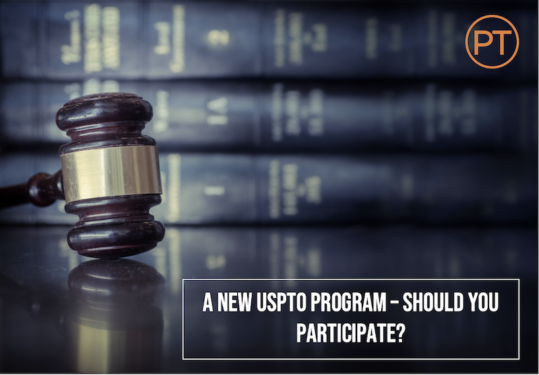The United States Patent and Trademark Office (USPTO) began on Feb. 1. a pilot program titled Deferred Subject Matter Eligibility Response — abbreviated as “DSMER.” The pilot program was set up in response to a March 2021 letter to the commissioner of the USPTO from U.S. Senators Tom Cotton and Thom Tillis.
The letter requested that the Office:
- Initiate a pilot program directing examiners to apply a sequenced approach to patent examination. This pilot program would require selected examiners—and applicants who voluntarily elect to participate—to engage in a full examination of the grounds of patentability and then, once that process is complete, a full examination of the grounds of eligibility. Such a pilot program should conduct a thorough and reasonable number of examinations using this method and measure whether this approach is more effective, and produces higher quality patents, than the traditional compact examination approach. (Emphasis added).
Contrary to what the senators requested, the pilot program does not create a two-stage approach. The program requires that examiners proceed as they currently do by examining both subject matter eligibility and patentability, but it does allow applicants to defer responding to rejections on the basis of 35 USC § 101.
Nuts and bolts of the program
The program as set up is unlikely to be “more effective” or “to produce higher quality patents, than the traditional compact examination approach” since it does not actually substantively change the current approach on the part of the examiner. Rather than dividing patent examination into two phases—1) a full examination of the grounds of patentability and then once that process is complete, 2) a full examination of the grounds of eligibility—the program just defers the applicant’s required response to 101 rejections.
The program does not permit applicants to opt in; instead, it is available by invitation only. Which applications will be subject to invitation is unclear.
To qualify for an invitation, an application must meet the following criteria:
- the application must be an original nonprovisional utility application or national stage entry of an international application
- reissue applications are not eligible
- continuation and divisional applications are excluded; that is, the application must not claim the benefit of the earlier filing date of any prior nonprovisional application
- special status applications (applications that have been advanced out of turn or expedited) are not eligible
- the application must be assigned to a participating primary examiner
- the first Office Action on the merits must include rejections both on the basis of section 101 as being directed to non-patentable subject matter and rejections based on other sections of the statute (such as rejections over prior art or rejections based on section 112)
The invitation will be included in the first Office Action on the merits and can be accepted by filing a completed form PTO/SB/456. If not accepted, the invitation is automatically declined and no further action is necessary.
If an applicant accepts, they need not address rejections on the basis of subject matter eligibility until after all other rejections have been resolved or until the waiver ends upon final disposition of the application. The examiner is required to consider whether the applicant’s responses to other rejections—for example, amendments made in response to an obviousness or indefiniteness rejection—overcome the section 101 rejection or rejections originally made.
Why you should say no to the DSMER program
We note that agreeing to participate in the program may actually disadvantage the applicant. The waiver of the pilot program ends upon the issuance of a final Office Action (and other events that are considered “final disposition” of the application). As any experienced patent applicant knows: final Office Actions are common and second or subsequent non-final Office Actions are rare.
The federal notice announcing the program warns that “Applicants are cautioned that participation in this program is not, in itself, a good and sufficient reason why an amendment or evidence was not earlier presented under 37 CFR 1.116 or 41.33. See, e.g., MPEP 714.12 and MPEP 1206 regarding amendments and other replies after final rejection or appeal.”
Thus, in the event, for example, that the applicant receives a Final Rejection on the basis of prior art as the second Office Action and has not presented evidence nor amended the claims in response to the previously waived (but no longer waived) subject matter eligibility rejections—and that applicant desires to file an appeal—the applicant would be precluded from amending the claims or submitting evidence in response to the subject matter eligibility rejection unless the applicant files a Request for Continued Examination along with submission of the evidence or amendment prior to filing a Notice of Appeal. This incurs additional cost, takes additional time and does not benefit the applicant.
So what upside does the program offer for the applicant?
Except in the unusual case that the examiner issues a second Office Action indicating allowable subject matter that the applicant decides to accept, we do not see an upside. In essence—by incurring the added expense of further response—the applicant is punished for participating in the program.
Paul C. Onderick is a patent attorney and licensed optometrist whose practice focuses on assisting clients in seeking patent protection and developing and managing patent portfolios. Much of Paul’s practice focuses on seeking to protect innovations in technologies that relate to his background in optometry, including optical products such as microscopes and digital projectors; clinical and surgical instrument-related products; heads-up and night vision displays; and laser-refractive technologies.

